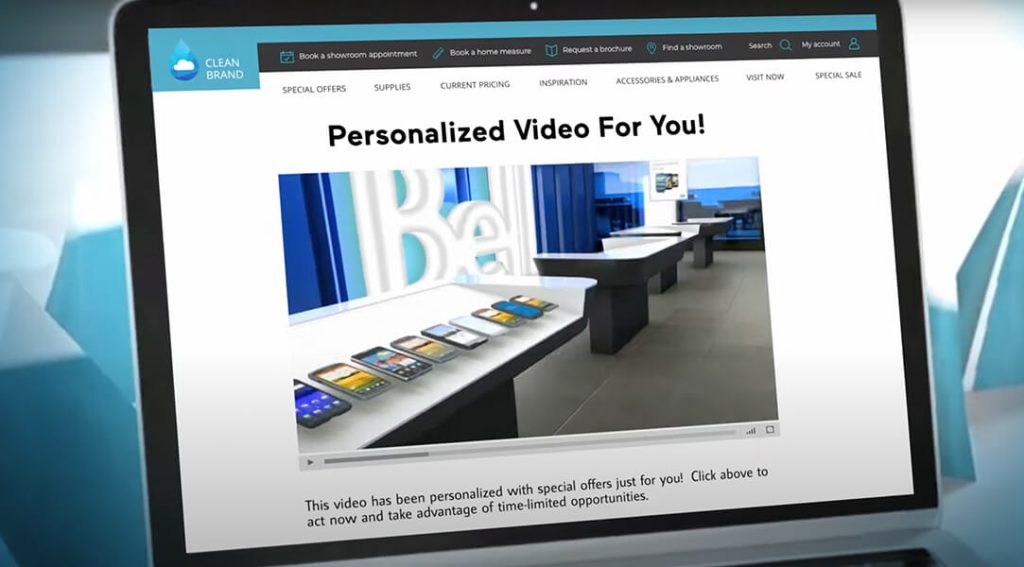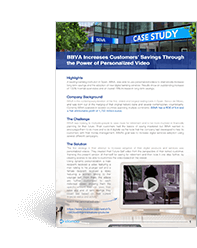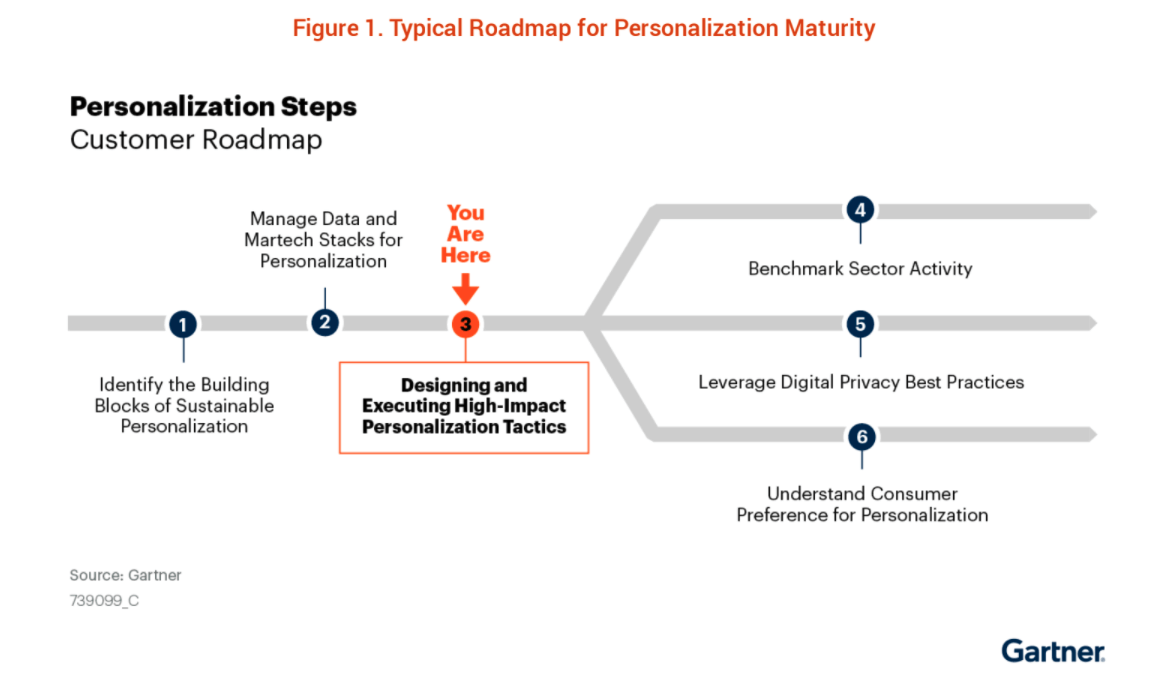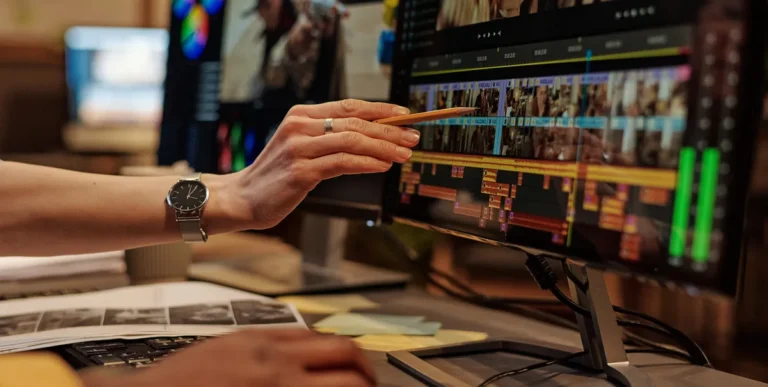Idomoo was recognised in the 2022 Gartner® report titled, “Add Video to Your Personalisation Strategy.” We know personalisation and video are both key tools for CX. Together, they represent a powerhouse for meaningful engagement between the brand and consumers.
As Gartner notes in the report:
“Personalised Videos are designed to improve customer experiences by delivering relevant content during the customer journey.”
To deliver such content consistently across the customer journey, scale is essential, and Idomoo’s full-stack and fully open Next Generation Video Platform delivers. It lets brands of all sizes create millions of dynamic, cinematic videos in up to 100x real time.
So what exactly is Personalised Video in a nutshell? Here’s a quick explainer.
How Personalised Video Works
As the name suggests, Personalised Video is a form of personalised content, in which customer data is used to design and deliver a unique experience that’s tailored to a particular individual. In doing so, a brand is able to capture the attention of their customer and effectively connect with them through a value-filled interaction.
Personalised content can take many forms, but video has emerged as one of the most effective because of its popularity.
For years, people have turned to video as a source of information and entertainment, but the COVID-19 pandemic prompted new consumption habits as viewers watch and engage with video now more than ever.
It makes sense, then, for brands to leverage video in their personalisation strategies.
“Personalised Video content assets afford an opportunity to align with this behavior shift and address a customer’s need during the buying journey or ongoing relationship, such as enhancing the onboarding experience and rewarding loyalty.”
– Gartner
Types of Data in Personalised Video
While meaningful details are the foundation of all personalised video, there are different kinds of data available and various ways that data can be incorporated.
First-Party Data
One type of Personalised Video includes content that leverages customer data already collected by the company. This approach uses first-party data to design a personalised message for each individual customer.
Information like the customer’s name, how long they’ve been a customer, their past purchases, etc., can all be used to craft a unique video.
Live Data
Beyond first-party data, Personalised Video can leverage third-party data as well. It’s called live data because the live data can update the video in real time.
Want to send your customer current flight times or product prices? If you link your video to the data source, it can change based on the latest information. If a product is out of stock, have another one show instead. If a price changes, it updates, right in the video. That means your Personalised Video is endlessly evergreen.
Contextualized Data
Through Living Video technology, a video can also be personalised with contextual data. This type of Personalised Video takes into account the viewer’s context, such as what device they’re using, their local time and current weather.
The video can even update in real time so the same video will be different for someone in London versus someone in New York.
Zero-Party Data From User Customisation
Zero-party data has become a bit of a buzzword in marketing. Even closer to the customer than first-party data, zero-party data is what users willingly share with you, and it’s part of video now too.
Videos can be customised by the viewer directly in the player. Any element, from the text to the selection of scenes, can be customised by the user so it’s perfectly tailored to them. This kind of video is perfect for sharing on social media, tapping into the power of UGC (user-generated content) to expand reach and brand love.
The 3 Objectives of Personalised Video (With Examples)
Beyond understanding what Personalised Video is and the forms it can take, it’s important to consider the purpose of the content. Gartner notes this as well with the following recommendations for digital marketing leaders.
- Identify high-value opportunities to use Personalised Video by fulfilling an unmet customer need.
- Understand and select the right types of video personalisation formats.
- Identify internal and external resources to ensure their ambitions are aligned to the organisation’s data-driven maturity.
“These personalised videos have one of three main objectives,” says Gartner, “to inform, to persuade or to make an emotional connection.”
Here are some examples of each use case.
To Inform
Through a combination of audio, visuals and text, video is a fantastic medium for communicating information. By incorporating personalised details in a video, marketers can present their customers with the most accurate and relevant information.
For instance, BT sent out Personalised Videos walking new customers through their very first bill.
Instead of generically explaining how billing works, the video included the exact amounts and dates the customer needs to know about. The result was a video that was truly relevant and helpful for their customers and a great start to a new brand-customer relationship.
To Persuade
Because they can include details that appeal to the specific needs of a customer, Personalised Videos can be effective at persuading the viewer into a particular action. Whether you’re trying to upsell to a current customer or convince a potential client to do business with you, a targeted (rather than generic) approach has always proved effective in the art of persuasion.
Take BBVA, for example. Looking to motivate their customers to save for retirement, they made a compelling case for increasing contributions by including personal details that would resonate with the viewer. By presenting customers with a message from “their future self,” BBVA saw outstanding results, including an overall 78% increase in long-term savings.
To Make an Emotional Connection
It’s no secret that video can stir powerful emotions within people.
From heart-pounding highlight reels to entertaining blockbusters, certain scenes, sounds and words can come together to become a piece of content that viewers strongly value. When personal details are added, this effect is amplified, making Personalised Video perfect for making emotional connections. After all, in a Personalised Video, the video stars your favourite person — you!
Post on
Being able to connect with your customers is an essential part of boosting engagement, showing customer empathy and mastering customer retention, all of which can have a direct effect on your bottom line. Some ideas for doing this with video could be a personalised welcome, a thank-you message, or the ever-popular recap video, as seen below.
As a gift to their players, Ubisoft sent out Personalised Videos to nearly 5 million people in celebration of 5 years of gameplay. The videos tapped into the exciting moments each gamer experienced, applauding them on their personal stats and crowning them with titles like visionaries, warriors, hackers and heroes.
With a special thank-you message from the game creators at the end, the campaign was a hit among players. As they shared their Personalised Videos all over social media, they showed their loyalty and appreciation for Ubisoft, thanking the brand for the memories and friends made.
Is Your Organisation Ready for Personalised Video?
Once you have a fuller understanding of Personalised Video, the next step is to determine whether your organisation is ready to incorporate it into its marketing strategy. As the Gartner report points out, “It remains important that digital marketing leaders note that Personalised Video is a relatively advanced step along a marketer’s personalisation journey.”
The figure below from Gartner illustrates this point.
Additionally, the maturity of your organisation’s data and analytics practices will need to be assessed. According to Gartner, “Before setting out to do Personalised Video, you’ll want to understand your organisation’s mastery of personalisation techniques and build on lessons learned.”
Address any data quality issues and identify the data sources that can be used. A mature data management infrastructure is critical for effective video marketing for 3 major reasons:
- It ensures that the data used in Personalised Video is accurate and clean. This means no misspellings, duplicates, etc.
- Proper management allows for a better understanding of the data. In other words, there needs to be context behind the data that allows you to pull out insights.
- Data is needed to track the ROI and effectiveness of video campaigns. Some video metrics to focus on include click-through rate, completion rate, downloads or social shares, CTA conversions and more.
Once the proper data and analytical resources and systems are in place, your organisation can then start to evaluate external resources and select a Personalised Video provider to help you bring your videos to life.
Choosing Your Personalised Video Vendor
The functionalities and models of video personalisation providers vary greatly across the industry. Some are purely self-service tools that allow you to weave personalised elements into a video while others may have more complex functionalities involving data sources and video editing.
Idomoo offers Personalised Video as a service through its industry-leading Next Generation Video Platform. Whether you want us to handle the details or prefer to use our fully open self-serve platform, you can launch large-scale Personalised Video campaigns in a matter of days. Here are some highlights from our platform:
- Intuitive interface with automation tools, robust APIs and integrations to save you time
- Living Video functionalities like contextualization, interactivity and user customisation
- Enterprise-grade security that guarantees data is anonymised, masked and protected
- Video distribution across channels, integrated with our real-time analytics dashboard
Want to learn more about creating Personalised Video with Idomoo? We’d love to show you how it all works. Click below to request a demo from one of our experts.
Gartner, “Add Video to Your Personalisation Strategy”, Anna Maria Virzi, 28 April 2021. GARTNER is a registered trademark and service mark of Gartner, Inc. and/or its affiliates in the U.S. and internationally and is used herein with permission. All rights reserved.
Gartner does not endorse any vendor, product or service depicted in its research publications, and does not advise technology users to select only those vendors with the highest ratings or other designation. Gartner research publications consist of the opinions of Gartner’s research organisation and should not be construed as statements of fact. Gartner disclaims all warranties, expressed or implied, with respect to this research, including any warranties of merchantability or fitness for a particular purpose.







